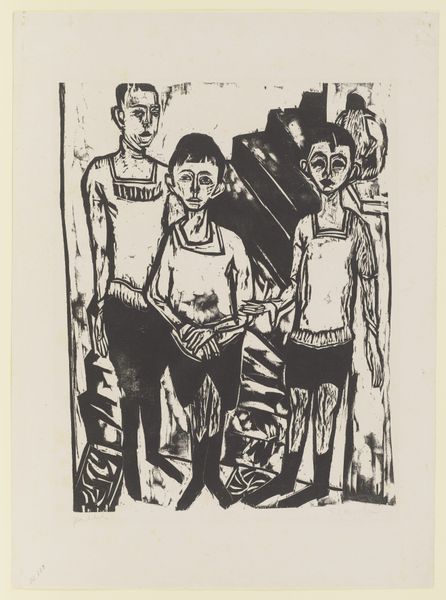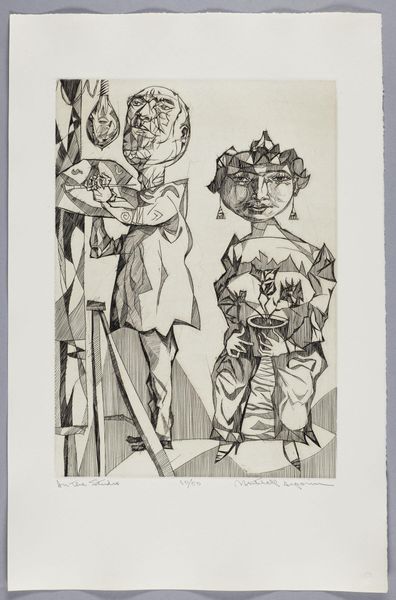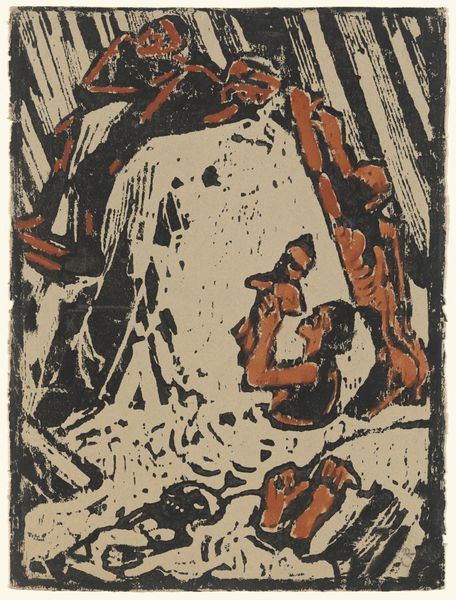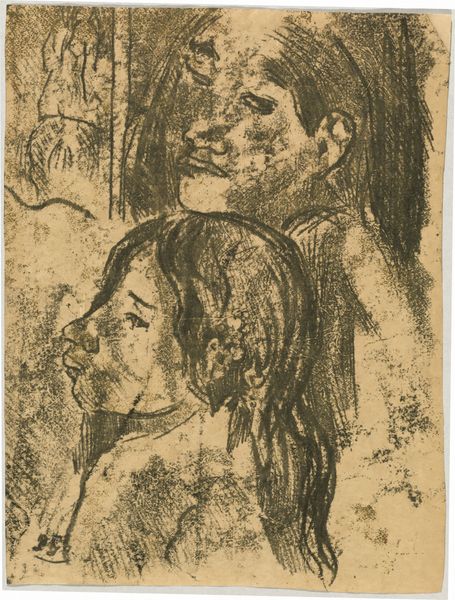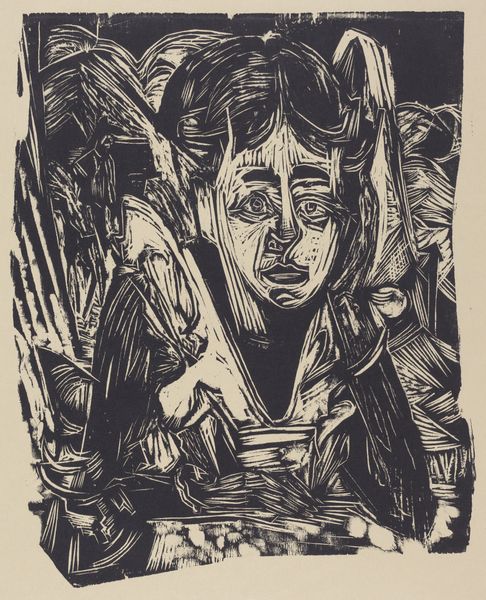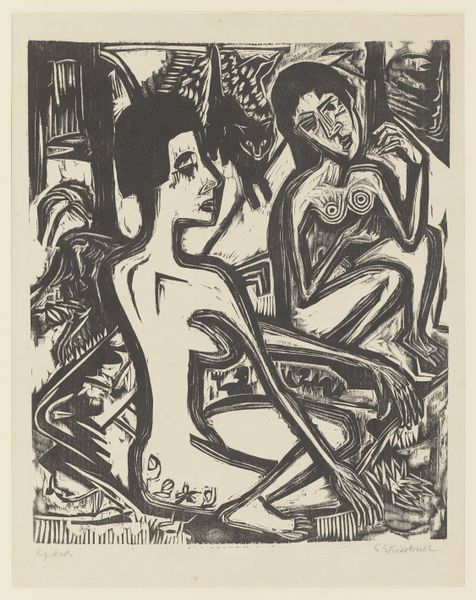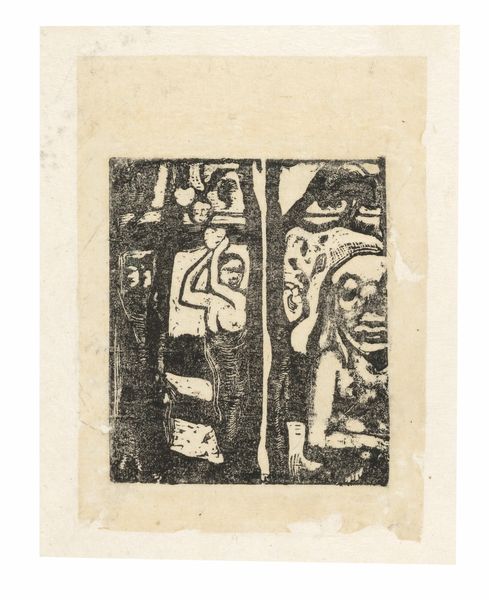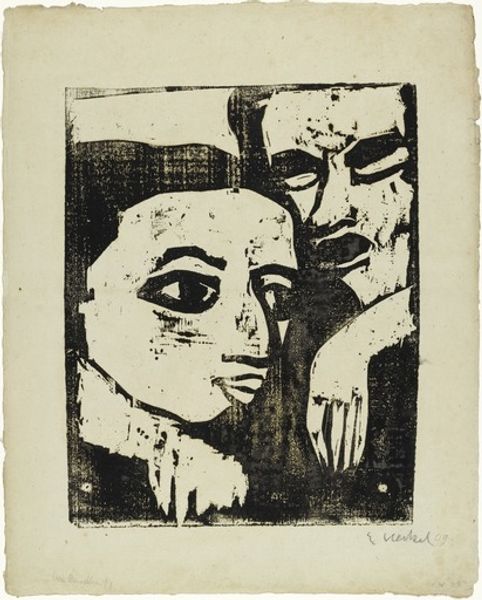
drawing, woodcut
#
portrait
#
drawing
#
caricature
#
caricature
#
german-expressionism
#
expressionism
#
woodcut
Copyright: Public Domain
Curator: Ernst Ludwig Kirchner’s woodcut, “Kinderporträt K-H. – Zwei Knaben (Köhler-Haußen),” made in 1908, depicts two young boys. Editor: The bold black and white contrast immediately strikes me; it’s almost unsettling, lending a starkness to the children’s faces. Curator: Kirchner, a key figure in German Expressionism, frequently explored themes of alienation and societal tension, which is particularly relevant in this historical period marked by significant industrial and social changes. Consider also that he was exploring new printing techniques here, the impact on labor for artists to create more prints… Editor: That raw quality seems intentional given its themes; it emphasizes the internal states of the children, maybe a questioning or loss of innocence reflecting broader anxieties of the time, beyond purely formal portraiture. This work really underscores the burgeoning expressionist movement’s departure from traditional academic representation, doesn’t it? The composition and the carving marks have a strong influence here. Curator: Absolutely, we see that focus shift here towards subjective emotional experience, heightened by his deliberate use of the woodcut medium. The sharp lines and stark contrast not only convey emotion but reflect a broader trend among artists questioning traditional art-making processes as these print methods allow for mass reproduction and broader impact across audiences. What do you think about its setting, and place within museums? Editor: Well, its place here highlights art’s complex relationship with institutions. Expressionism initially faced resistance; now its place is enshrined in the modern canon. The art world can seem ironic as works that were initially transgressive or shocking eventually find their place on museum walls, in that process almost neutering that initial shock! The work asks how socio-political events, how changes to social order affected individual artists such as Kirchner. Curator: Precisely. And its original purpose – was it intended for commercial reproduction, personal expression, or both? These considerations underscore the complexities surrounding art’s role in society. Editor: Examining such art prompts questions about cultural values, individual expression, and the power structures at play in art production and consumption. It helps challenge our notions about what art does. Curator: Indeed, seeing this today is not just an encounter with form but with historical context and lasting influence across society. Editor: And that stark effect Kirchner has achieved in this work, I suspect it will stick with me a long while after our conversation, as it seems particularly pertinent today as then.
Comments
No comments
Be the first to comment and join the conversation on the ultimate creative platform.


